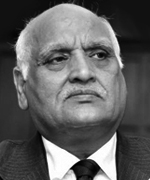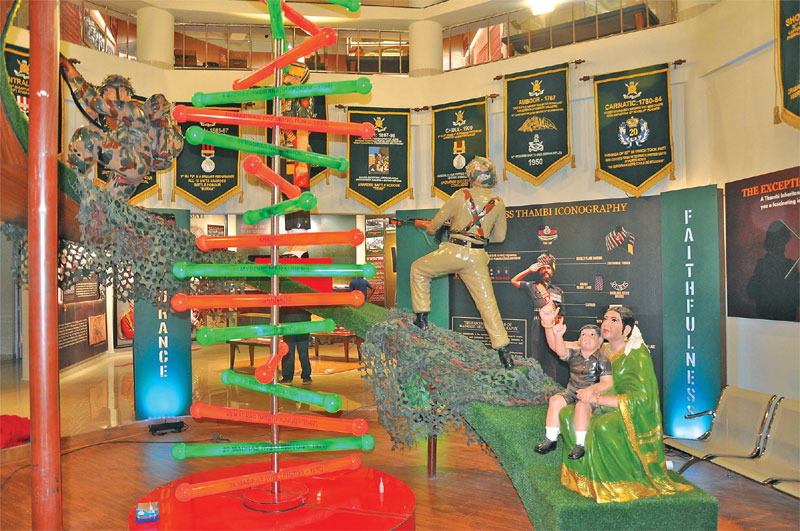Guts, Grit and Glory | Stories Museums Tell
 Maj. Gen. Raj Mehta
Maj. Gen. Raj Mehta
The most effective way to destroy people is to deny and obliterate their own understanding of their history
—George Orwell
The English word museum comes from the Greek mouseion, denoting a place or temple dedicated to the Muses; hence a building set apart for study and the arts, philosophy and research at Alexandria, a then Greco-Roman city with the first museum coming up in the early 3rd century BCE. In those ancient times ‘museum’ became a synonym for education. Even the fabled and perceptive Queen Cleopatra was known to have attended museum/temple proceedings at Alexandria.
The purpose of museums today is to protect and conserve artifacts that represent various facets of human history, for the sake of knowledge, understanding and enjoyment. Museums enable people to explore collections for inspiration, learning, and enjoyment. They are institutions that collect, safeguard, and make accessible artifacts, records, cataclysmic events and specimens which they hold in trust, for society.
There are different types of museums all over the world, such as fine arts, applied arts, craft, archaeology, anthropology and ethnology, history, cultural history, military history, science, technology, children's museums, natural history, numismatics, botanical and zoological gardens and philately. Many are famous landmarks, including the Louvre, in Paris, the British Museum in London; the 19 museums of the Smithsonian Institution, USA and many others.

Depiction of one gallery at Madras Regiment Museum
Public Museums
Though latter-day museums began as private collections displayed in Europe in ‘wonder rooms’ or ‘cabinets of curiosities’ they remained accessible to just the privileged. It was in the Age of Enlightenment beginning with the close of the Thirty Years’ War (1648) and ending with the French Revolution (1789) that the first public museums began flourishing. Thus, the Museo Sacro opened to public in Rome in 1756, the British Museum in London in 1759, the Uffizi Gallery in Florence in 1765 and the Belvedere Palace of the Habsburg monarchs in Vienna opened in 1781.
The first truly public museum was however the Louvre in Paris, opening in 1793 during the French Revolution, enabling for the first time in history free access to the former French royal collections for people of all stations and status. Napoleon Bonaparte conquered the great cities of Europe, confiscating art objects as he went. Napoleon’s concept of a museum as an agent of nationalistic fervor, had a profound influence throughout Europe, which has now spread globally.
India on the Global Museum Map
Turning to India, even as our royalty must had kept their equivalents of European wonder rooms/ cabinets of curiosities for centuries, the first museum originally called the Imperial Museum of Calcutta came about in 1814 through Danish founder-curator Nathanial Wallich. It is India’s oldest (ninth oldest in the world) and largest museum with collections of antiques, body armour, ornaments, fossils, skeletons, mummies and Mughal paintings.
Today, as per the National Portal of Museums run by India’s Ministry of Culture, there are nearly 1,000 museums in India. These include museums under the Central Government, State governments, District level Museums, Museums under universities as well as many private museums. There is no clarity whether the list includes India’s military museums but even if those were to be added, they would not amount to more than 200/250. Inadequate for the world’s third largest regular armed forces, numbering almost 1.3 million men and women.
Military Museums
No statistics are available in the public space but on the basis of nearly four decades of military service and an ongoing fascination with military history thereof, one can share that as of date, we have a very impressive recently developed National War Memorial in Delhi that honours our brave-hearts since Independence. A national war museum is still a work in progress. The good news is that quality construction is under way, away from media glare.
So far as military museums are concerned, each Army Regiment of combat arms, supporting arms and all services, have their museums (often just one; sometimes two) at their Regimental Centres. Not enough is however known about the Navy and Air Force, except that they each have a few centralised museums. Key training establishments in the three Services have in general, a museum to project that training establishment or co-serve as its Regimental Museum. Museums that project women military personnel, families of defence personnel and how defence ‘brats’ are shaped—are of course future areas of development.
Individual units don’t have their museums in the main,
Subscribe To Force
Fuel Fearless Journalism with Your Yearly Subscription
SUBSCRIBE NOW
We don’t tell you how to do your job…
But we put the environment in which you do your job in perspective, so that when you step out you do so with the complete picture.








